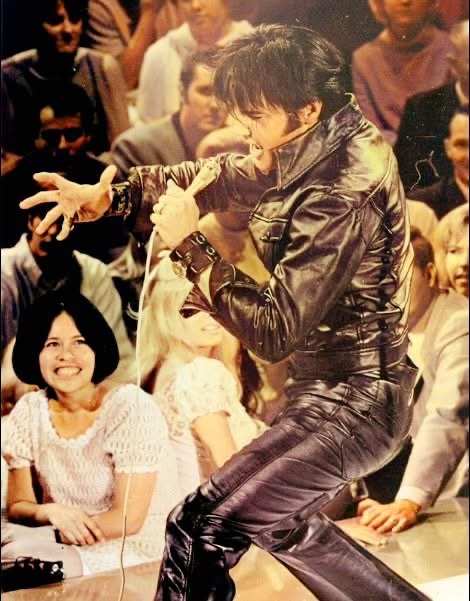
A New Look at Elvis Presley
Elvis Presley fans are in for a treat. Netflix’s Return of the King: The Fall & Rise of Elvis Presley uncovers untold stories and behind-the-scenes moments from his legendary 1968 comeback.
Behind the Comeback Special
The documentary takes viewers inside Elvis’s world. Frustrated with Hollywood’s cash-grab musicals, Presley craved a return to the stage. He struggled with stage fright and doubts but ultimately sought to reinvent himself with guidance from a legendary actor.
Even 47 years after his death at just 42, Elvis’s life continues to captivate fans. This film offers never-before-seen clips and interviews with Priscilla Presley and close confidante Jerry Schilling.

Heartbreaking Confessions
The documentary captures raw moments leading up to the 1968 Comeback Special, aired on NBC on December 3, 1968. After seven years away from live performances, Elvis faced immense fear.
“I was interested in exploring his decision to perform live again,” says director Jason Hehir. “1968 was a turning point for Elvis. It made sense to dive deep.”
Elvis’s frustration with Hollywood is clear. “Hollywood’s image of me was wrong, and I knew it. I felt obligated to things I didn’t believe in,” he admits.
Priscilla recalls watching him sing Old MacDonald Had a Farm in the 1967 film Double Trouble. “That to me is a crime,” she says. “It made him a laughingstock. And he knew it.”
A Career in Crisis
By the mid-1960s, Elvis’s film roles were repetitive and unfulfilling. He dreamed of being the next James Dean or Marlon Brando but felt trapped. “He sometimes became physically ill thinking about his film career,” Hehir explains. “He was frustrated but wanted more.”
Taking the Stage Again
In 1968, after years of mediocre films, Elvis returned to the stage. He faced uncertainty and fear. “He almost didn’t leave his dressing room,” Hehir says. “But once on stage, that’s where he thrived — microphone in hand, in front of an audience.”

The Story Behind the Leather
During the special, Elvis channeled Marlon Brando in a black leather outfit. Show producer Steve Binder spotted a photo of Elvis on a Harley, inspired by Brando’s The Wild One. Costume designer Bill Belew created a custom leather look, combining silk shirts and scarves, and Elvis loved it.
The leather jacket became iconic — a symbol of Elvis reclaiming his throne and showing the world he was back. AI colorization of old photos highlights just how bold the outfit was.
A Triumphant Return
The special was a huge success. Viewership soared, the soundtrack hit the top ten on the Billboard 200, and Elvis’s artistry was reignited.
“He hadn’t performed in seven years,” Hehir notes. “The teenage fans had grown up, yet Elvis captivated them all over again.”
Though his movie career never recovered, Elvis had found his true calling — live performance and music.
Legacy Restored
Elvis’s 1968 comeback wasn’t just a performance; it was a statement. He reclaimed his artistry, dignity, and place as the King of Rock ‘n’ Roll.
This legendary comeback reminds us that Elvis was more than a performer. He was an artist who triumphed over fear, frustration, and Hollywood missteps.

Leave a Reply